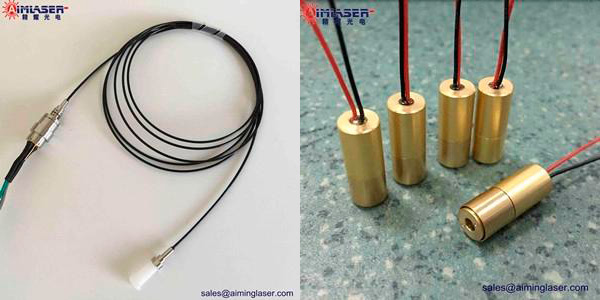With the use of copper in various industries, the functional requirements of various products are increasing, and laser welding has become a good connection method. However, copper welding using a laser becomes difficult due to the reflectivity and high thermal conductivity of the copper material. The combination of low melting point and high thermal conductivity makes obtaining good weld quality a challenge due to high energy utilization. The study showed that due to the variation in the absorption rate of different materials at different wavelengths, as well as the large differences in plasmonic absorption between different laser wavelengths. When two different lasers are used for welding, under the same process parameters, welding cross-sections of different geometries can be obtained.

Blue lasers emit beams with wavelengths between 400nm and 480nm, while near-infrared (NIR) lasers operate at wavelengths around 1000nm. Copper materials absorb shorter laser wavelengths at a higher rate than longer laser wavelengths such as 1064nm. The absorption rate of the blue laser on the copper surface is about 65%, while the absorption rate of the near-infrared laser is about 5%. In the power level of laser material processing, blue lasers consist of semiconductor stacks, the beams of which are transmitted through optical fibers with diameters of several hundred micrometers. Near-infrared lasers obtained from fiber oscillators have a lower beam parameter product (BPP) and a smaller beam waist compared to blue lasers.
Compared with blue lasers, 1064nmnear-infrared lasers will achieve higher output power levels, and their high intensity is essential for processing metal materials such as copper with high light reflectivity. Despite the high absorption rate of blue lasers, higher laser power is required for welding thick copper plates. Additionally, for blue lasers, the outputs of many lower power sources may need to be combined to achieve the total power required for a particular process. These disadvantages make blue lasers more expensive to process compared to near-infrared lasers. Therefore, copper processing places high demands on NIR lasers, and technologies need to be developed to overcome the challenges associated with NIR lasers.
The researchers used a green laser with a wavelength of 532nm and a laser with a wavelength of 1064nm for copper micro-welding. The 1064nm laser is frequency doubled using a nonlinear optics (NLO) crystal and harmonic separator to generate green laser light. The results show that when the 1064 nm Nd:YAG laser is used for copper micro-welding, pinholes appear, and the absorption rate of the near-infrared wavelength laser increases rapidly, resulting in deep penetration. Transition welding conditions are required between small hole welding and heat conduction welding. Under transition conditions, the process can be stabilized, resulting in good surface quality and a large penetration depth without porosity. At the same time, near-infrared lasers can achieve high average power at an affordable cost. Combining near-infrared lasers with green lasers enables economic viability of copper laser welding processes. If the two wavelengths are combined and a green laser is used to initiate pinhole formation, process efficiency can be improved and high-quality welds can be achieved.